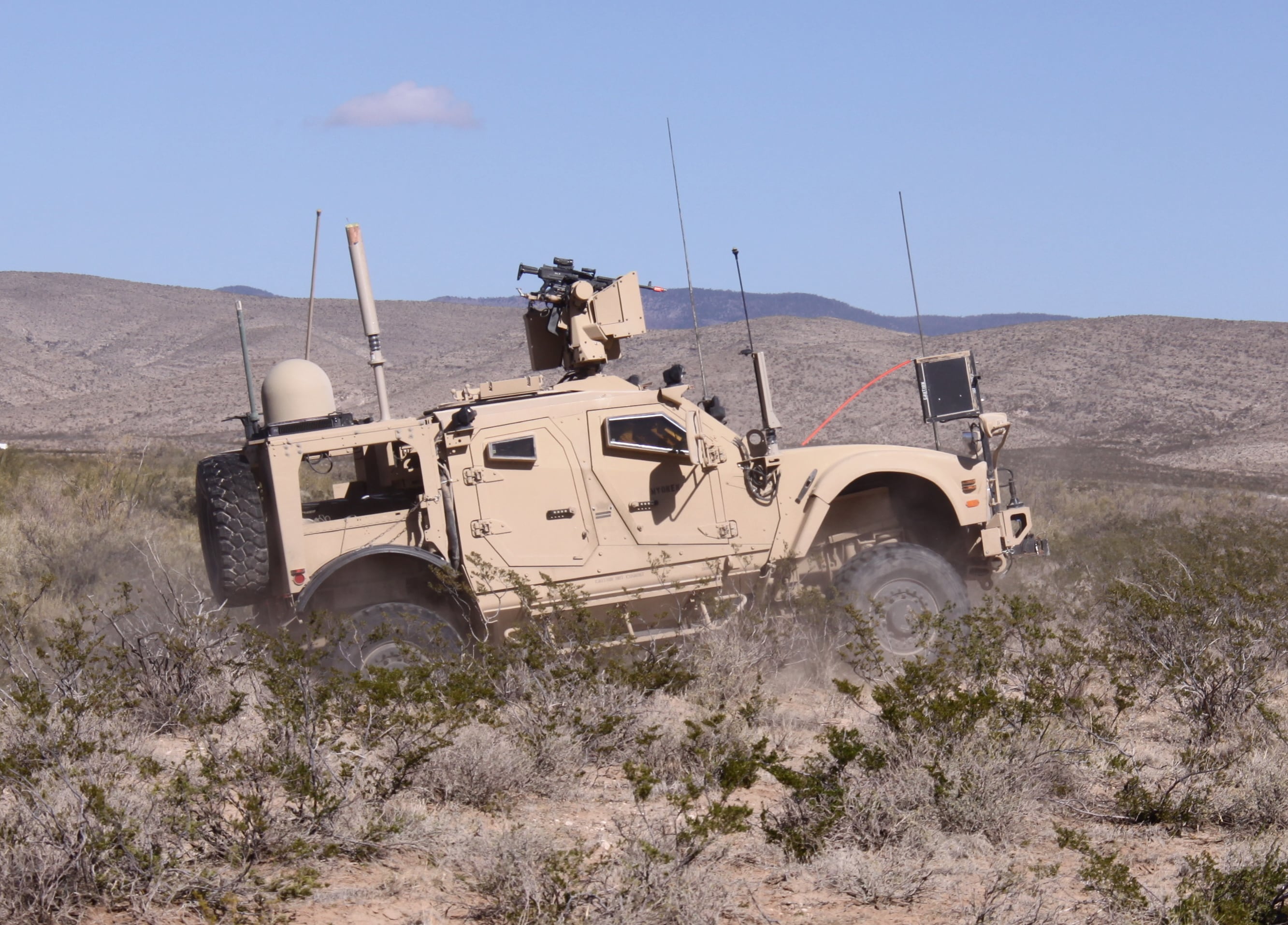Future battlefields will pose challenges for an Army that is looking to become more expeditionary, which requires operating in more austere forward-deployed locations.
So-called multi-domain battle will present the Army and the joint force with distinct problems, especially those at the tip of the spear.
"Russia is the pacing threat. Even a most casual look into what Russia is doing in eastern Ukraine today tells us insights into what a multi-domain battle environment will look like," Maj. Gen. Duane Gamble, Commanding General 21st Theater Sustainment Command, said March 14 at the AUSA Global Force Symposium. "It will require us to operate and sustain operations in an unforgiving lethal environment, one in which our Army is not operated in since World War II or some of the battles in Korea."
While not currently supporting multi-domain battle in Europe today, Gamble said that if the force shoots for where they want to go in 2025, operations in Europe, but not Europe alone, provide the laboratory to learn, adapt and build the foundations for multi-domain battle and understand the sustainment components of complex environments.
In regard to sustaining forces in this new operational environment, Gamble identified time and distance as the most pressing challenges in trying to resupply forces with new or refurbished equipment from the depots far away from the front lines. Another component is adapting to the new operating environment forces might find themselves in.
This combat environment is widely dispersed and contested, and it's going to take longer to get to forces in theater forward-deployed in austere environments. As such, more preparation will be needed to move and maneuver in this type of environment. Forces might have to suppress an enemy air defense to move a convoy just to secure the route to get supplies forward, he said.
In fact, to some, logistical support could be one of if not the greatest challenges and concerns related to multi-domain battle for ground forces in the future.
"As we talk about multi-domain battle, the area that concerns me the most is not necessarily the tactical fight, but it's our ability to logistically support and sustain over vast distances and over long periods of time when our logistical support can be attributed by kinetic operations or disrupted by cyber operations working against us," Paul Rogers, director of the Army Tank Automotive Research, Development and Engineering Center, said at the same conference. "If we want independent operations, we have to ensure logistical operations in a near-peer fight."
Maj. Gen. Flem Walker, Deputy Chief of Staff G-4 Army Forces Command, which is the Army command responsible for training the total force to meet the requirements of combatant commanders, said FORSCOM is ensuring how units can compete against a vast array of threats from near-peer to hybrid, or some version of hybrid, in the conventional and unconventional force. He noted the integration of special operations forces into conventional units during training as well as the integration of cyber and electromagnetic spectrum operators.
Walker, speaking alongside Gamble, noted that mission command on the move — the ability to conduct various mission tasks while moving from one location to the other as opposed to performing them in a static location — will be critically important going forward. However, the force has not had to sustain or conduct mission command on the move, use our communications systems, since early on in Operation Iraqi Freedom where they conducting refueling on the move operations, Walker said.
Mastering those fundamentals will be more important than ever in an expeditionary environment, he adding, noting they can address a lot of this at home station.
Within the multi-domain battle aspect, Henry Muller, the director of Communications-Electronics Research, Development and Engineering Center, explained at the conference during a separate panel, that mission command of operations falls under one of his three focus areas.
From the CERDEC perspective, this involves looking at mission command, battle command application, looking at information fusion, cyber electromagnetic effects, doing the cyber situational awareness as well as the overall situational awareness for the commander, helping him develop the tools to determine a course of action, he said.
Additionally, putting in place a network that is simpler to operate, that is defendable, that can fight through cyberspace operations and deliver that information down at the lowest echelon, that being the individual solider at the speed at which it needs to get there, is also a critical focus, Muller said.
Advancements in technology coupled with new priorities for the Army are not only making communications on the move in more austere environments a reality, but command posts of the future will be smaller, more easily transportable and more connected than ever before.
The next iteration of the Army’s tactical network — Warfighter Information Network-Tactical — takes communications on the move head on making the force more agile and more connected at lower echelons to enhance expeditionary operations.
Mark Pomerleau is a reporter for C4ISRNET, covering information warfare and cyberspace.








